Crimson Night Raspberry Plant
Description
A must for the edible landscape! Plant features red canes and bountiful red berries. Fruit is conical in shape with a glossy deep-red appearance. Thick, sturdy canes grow vigorously, but need protection from winter elements. More compact growth habit in colder, northern gardens making it suitable for container gardening. Discovered in 2003; introduced in 2012 by Cornell University. Fall-bearing (everbearing) primocane with a summer crop. Floricane berries ripen in late June. Primocane berries ripen in September. Disease-resistant to phytophthora root rot and leaf issues. Cold-hardy. Self-pollinating. A licensed variety of Cornell University. May be covered by USPP #24,949 or other patents.
Note: Do not plant Red, Gold or Purple raspberries within 75-100 feet of Black raspberries. Black raspberries may be more susceptible to viral diseases carried by aphids to and from nearby raspberry plants.
After planting, be sure to prune the bare-root canes back to about 2 inches above the ground. (This does not apply to potted raspberry plants.) Do not skip this step! It is a crucial factor in encouraging the roots to send up new growth during the growing season. It is in the nature of raspberry plants to send up new growth as suckers or basal shoots from below the ground. This means the canes that you plant may not be where you find signs of life or new growth. When it’s time to grow, you will see new sprouts emerge from the ground around where you planted the cane, and this growth is coming from the raspberry plant’s root system.
Survival Guaranteed!


Since 1816, Stark Bro’s has promised to provide customers with the very best fruit trees and plants. It’s just that simple. If your trees or plants do not survive, please let us know within one year of delivery. We will send you a free one-time replacement, with a nominal shipping fee of $9.99. If the item in question is not available, we can issue a one-time credit to your account equaling the original product purchase price or issue you a refund. Read more about our warranty policy.
Characteristics
| Bloom Color | White |
| Fruit Color | Purple |
| Fruit Size | Medium - Large |
| Hardiness Zone Range | 4 - 8 |
| Pollination | Self-Pollinating |
| Ripens/Harvest | June And September |
| Shade/Sun | Full Sun |
| Soil Composition | Loamy |
| Soil Moisture | Well Drained |
| Soil pH Level | 6.0 - 6.8 |
| Texture | Firm, Juicy |
| Years to Bear | 1 - 2 |
Size & Spacing
Mature Size
Recommended Spacing
Zone Compatibility
Pollination
This variety is self pollinating.
Tools & Supplies
Planting & Care
Learn all about how to grow raspberry plants in The Growing Guide. An entire section of our website dedicated to your growing success.
Shipping Information
Arrives when it's time to plant
Questions & Answers
Some plants require a "blanket" of insulation so the roots are not damaged over the winter. There is an excellent article about preparing your plants for winter here:
http://www.starkbros.com/growing-guide/article/fruit-tree-care-winterizing
Perhaps you could get a light fruit set. It’s a Primocane plant, so it fruits on this-year’s canes. Many factors would come into play, though - your horticultural zone, the length of your Fall, whether the plants start early in the spring because they have good southern exposure, etc. Even if you do get fruit, it may be just a taste of berries the first year. You should be good the second. I live in Chicago and cut all my primocane berry canes to the ground in the late winter. Most years our first frosts are mid-to-late November and we have berries from early September through frost on the new canes.
I planted in April of last year. I let the original canes stand over summer, fall, and winter here in NE Ohio. Most canes survived, pruned out the winter damage, and they did bear fruit in late June of this year. Now done bearing, and will be pruned to ground soon. The new growth canes from this year are looking like they may flower soon. These berries have a more complex taste than other red raspberries. I like them a lot.
Yes--but the berries are delicious and it is definitely worth the thorns!
I don’t know if they NEED support but I planted all my plants at the base of a cow panel fencing section. As it grows I weave it in & out of openings to control the stability & shaping. It’s just my preference.
it's not a black raspberry. It's more of a dark red. Mine just produced last year and the berries were really lovely with an excellent raspberry taste!
Yes, Crimson Night raspberries are everbearing, meaning they produce fruit in both the summer and fall.
The lowest temperatures it can tolerate is -20°F to -30°F
There are several good nutrition sites on line that can be found with a search of “raspberries and nutrition”. I found that 1 cup of red raspberries have 64 calories with 5.4 g of natural sugar and 8 g of fiber. Raspberries are a great natural dessert and are not prone to making one hyperglycemic if eaten fresh or frozen without added sweetener.
The cell-pack contains individual plant starts that are meant to be planted separately, 5-8' apart.
Customer Reviews
This spring of 2025, 2-1/2 years later, I noticed that ONE SINGLE PLANT I had survived. It was small, barely visible, half in the shade, crowded out with weeds, and wasn't getting much water. I only noticed it by sheer luck.
A few weeks ago I pulled out all the weeds, set up 4 stakes around it with string to keep the dogs out, and set up a drip system.
I took these pics today. The bush is 4 feet tall and I've been eating 1-3 berries a day for the last week. This is from a single, tiny, abused plant that my dogs tried to kill. I'm so inspired I bought another Crimson Red at the local store and planted it beside.
I will update this review if possible. This is a new variety for me so I am excited.














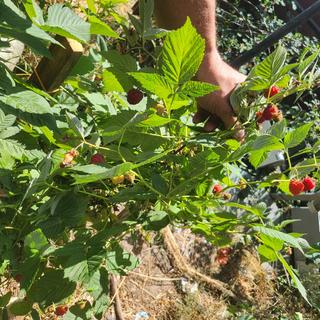
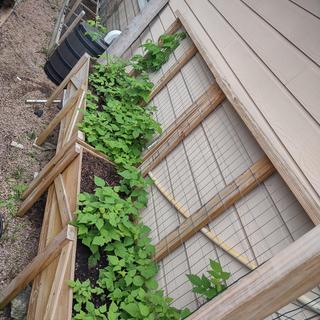
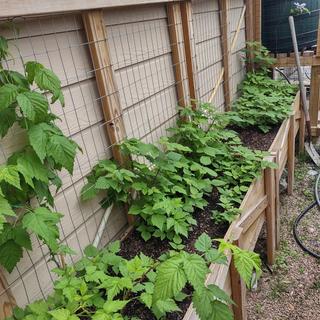
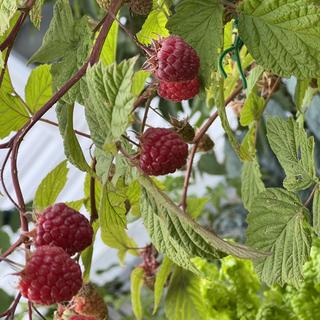
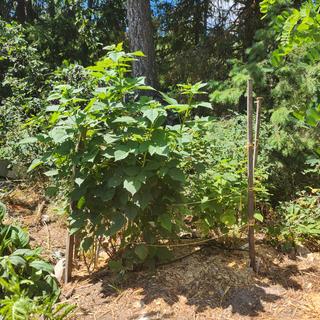
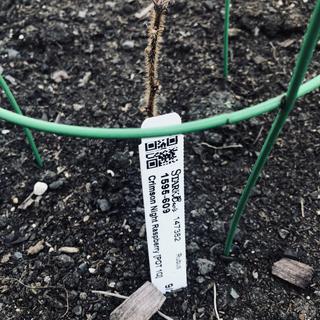

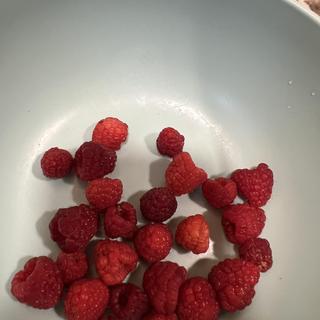

Darker fruit, vigorous growth, does well in my location.
The plant has good reviews and I trust Stark Brothers in terms of their comments on the product.
I had purchased a similar plant locally but it didn’t survive. I’m hoping that your plants are better quality.
You recommended it